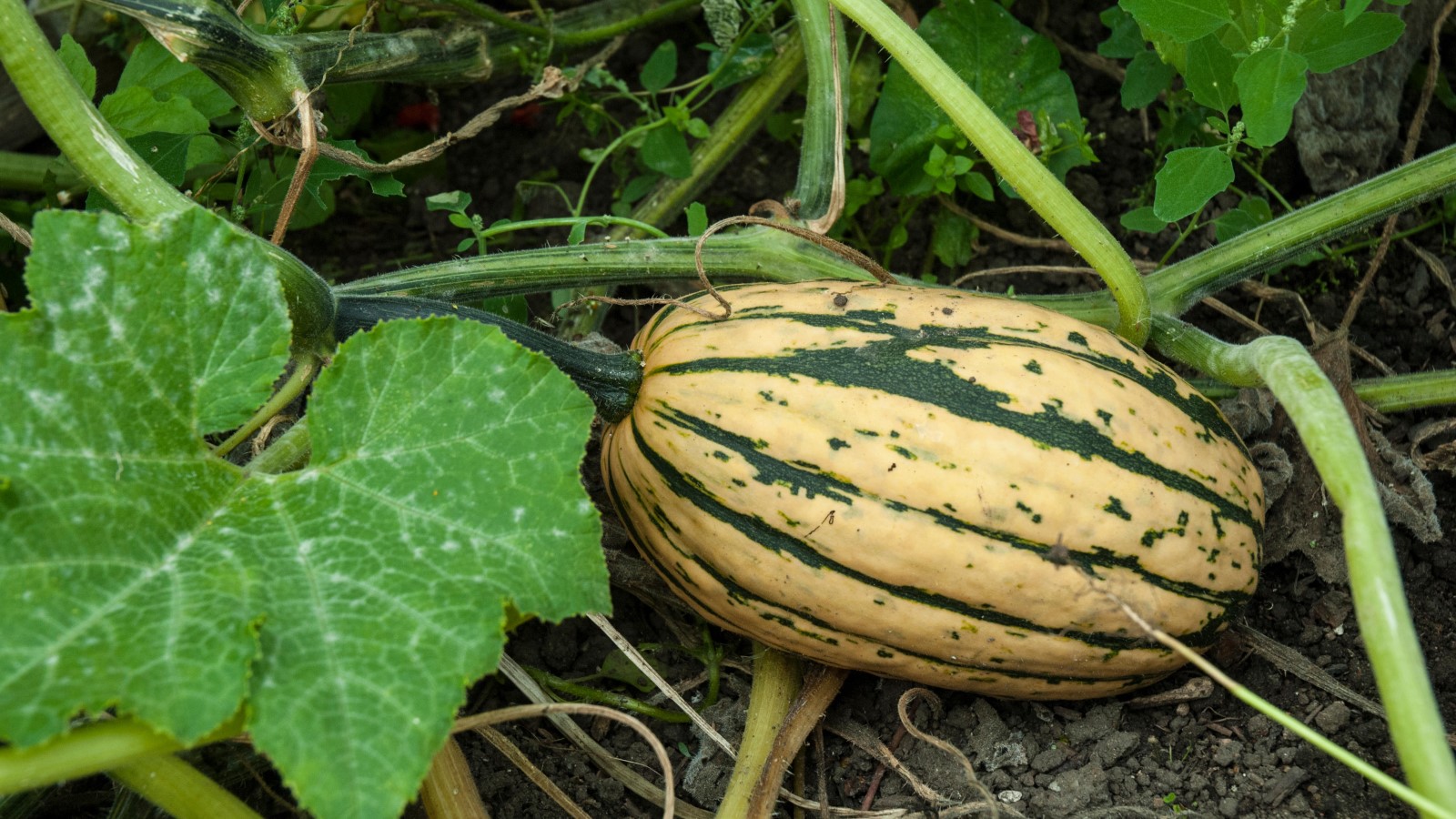
Squash plants grow very quickly and put on a mass of foliage as they develop. These large leaves can turn yellow for various reasons, but what causes discolored foliage and how worried should you be about it?
The usual suspects for squash leaves turning yellow are related to watering, nutrients, pests, and diseases. Though yellow leaves can also just be a sign of plant aging. If you are growing squash, or growing pumpkins also, then you need to be vigilant to spot yellowing leaves and take prompt action.
Most of the time, yellow leaves will not be a massive problem and there are simple measures that can be taken to deal with the issue. It is all about identifying the root cause and acting quickly to keep plants healthy and guarantee a good squash harvest.
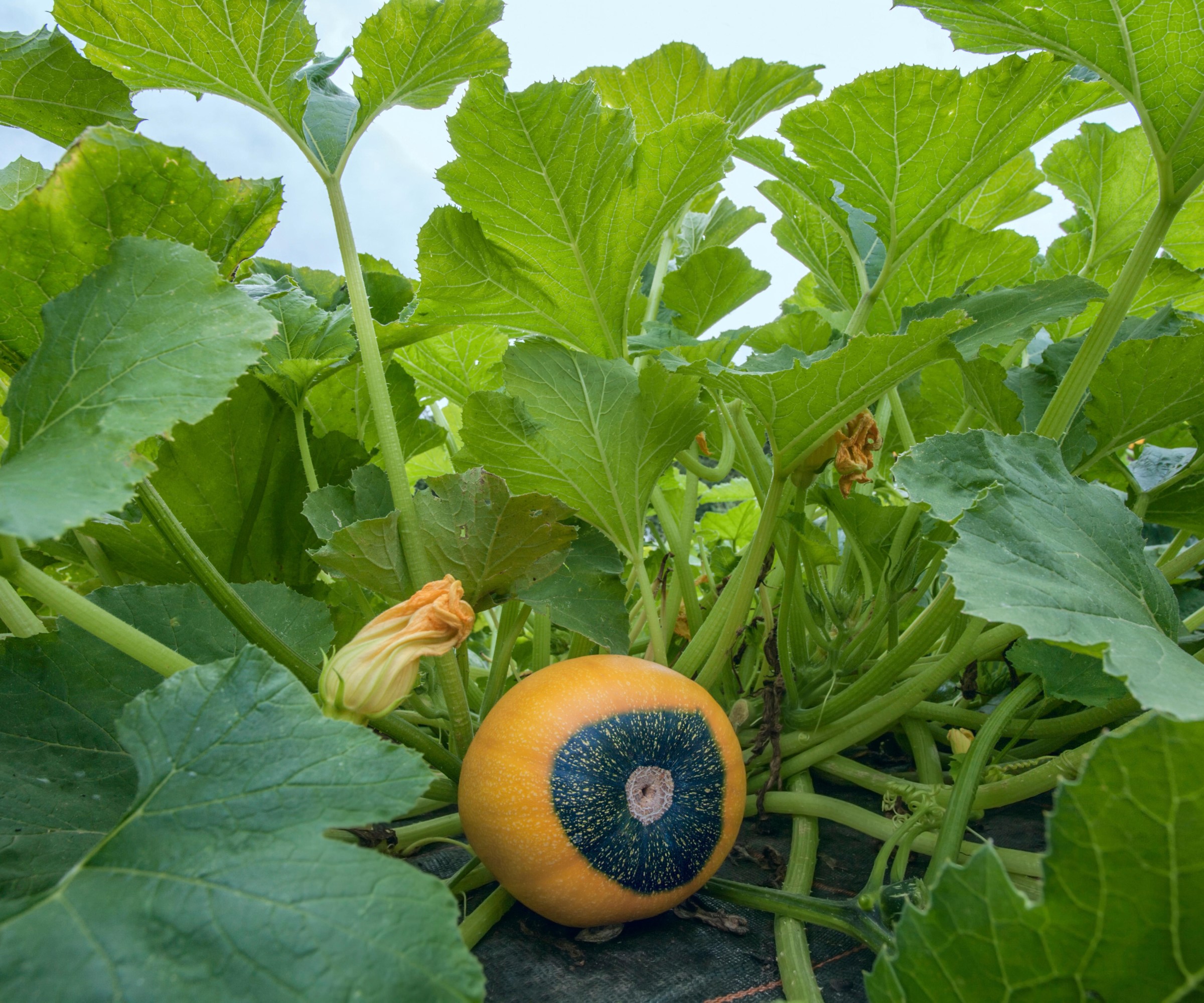
1. Watering
The main culprit for yellow leaves on squashes is often watering, either too little or too much water. Squashes are heavy feeders and need a lot of water throughout their fast-growing season and a lack of water will cause a lot of stress for the plant. It is often thought that squash plants ideally want two inches of water per week, either coming through natural rainwater falling from the sky or from the gardener watering the plants. During the summer months, rainfall often cannot suffice and extra water needs to be applied.
Lucy Chamberlain, fruit and vegetable growing expert for Homes & Gardens, claims that squashes can grow six inches a day if the conditions are warm and they have access to enough moisture. She says: ‘Such rapid establishment of a large leaf surface area demands ample moisture and feed. Sinking an upturned bottle, marked with a cane, alongside each plant will help to target watering amongst a sea of leaves.’
Yellowing leaves are also a sign of overwatering outdoor plants as roots suffocate in too much soil moisture and cannot deliver water and nutrients to the rest of the plant. Always check the soil moisture levels a few inches down using your finger, or a soil moisture meter available at Amazon, and if it feels really wet then hold off on watering until the soil dries out.
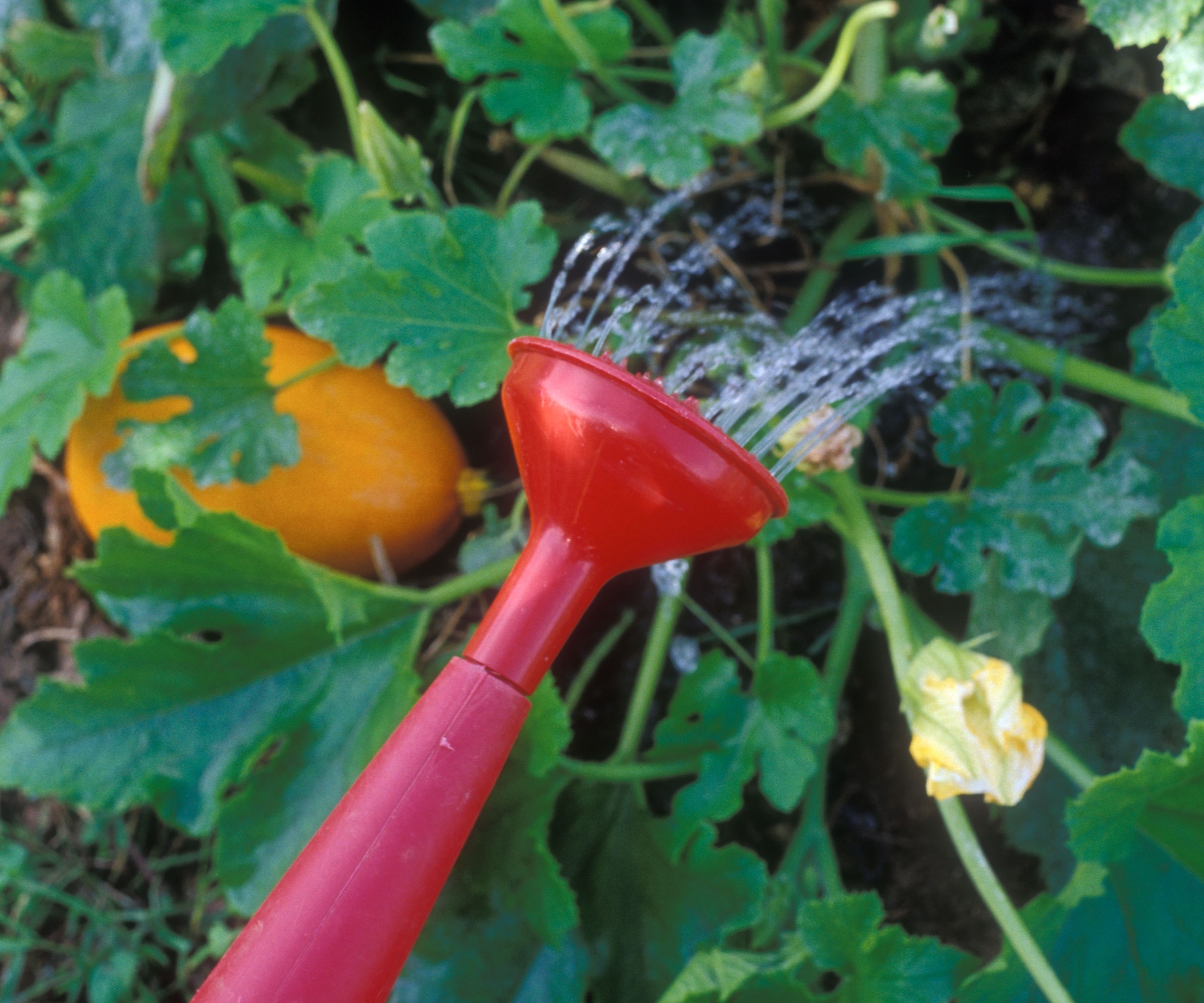
2. Nutrients
As mentioned earlier, squashes are hungry feeders that need a lot of water and nutrients. Any deficiencies in nutrients can cause leaves to turn yellow. A lack of nitrogen, one of the main nutrients required for healthy plant growth, can cause yellow leaves and so can any deficiency in iron.
Graham Rice, a vastly-experienced gardener and author, recommends that nurturing the nutrient makeup of the soil can start even before you plant the crops out in spring. He says: ‘In April, dig a hole at each planting site and work in plenty of organic matter such as compost before refilling the hole with improved soil.’
He adds that you need to ‘water and feed generously’ during the growing season, especially during hot and dry periods.
Squashes can benefit from mulching after planting with compost or well-rotted manure to add to the soil’s fertility. A balanced fertilizer can be added at the time of planting and then, once the first fruits start to show, give the plants a feed every two weeks with a high-potassium fertilizer, such as a feed designed for growing tomatoes. An example of a tomato feed that could be used is this Tomato Fertilizer available at Amazon.
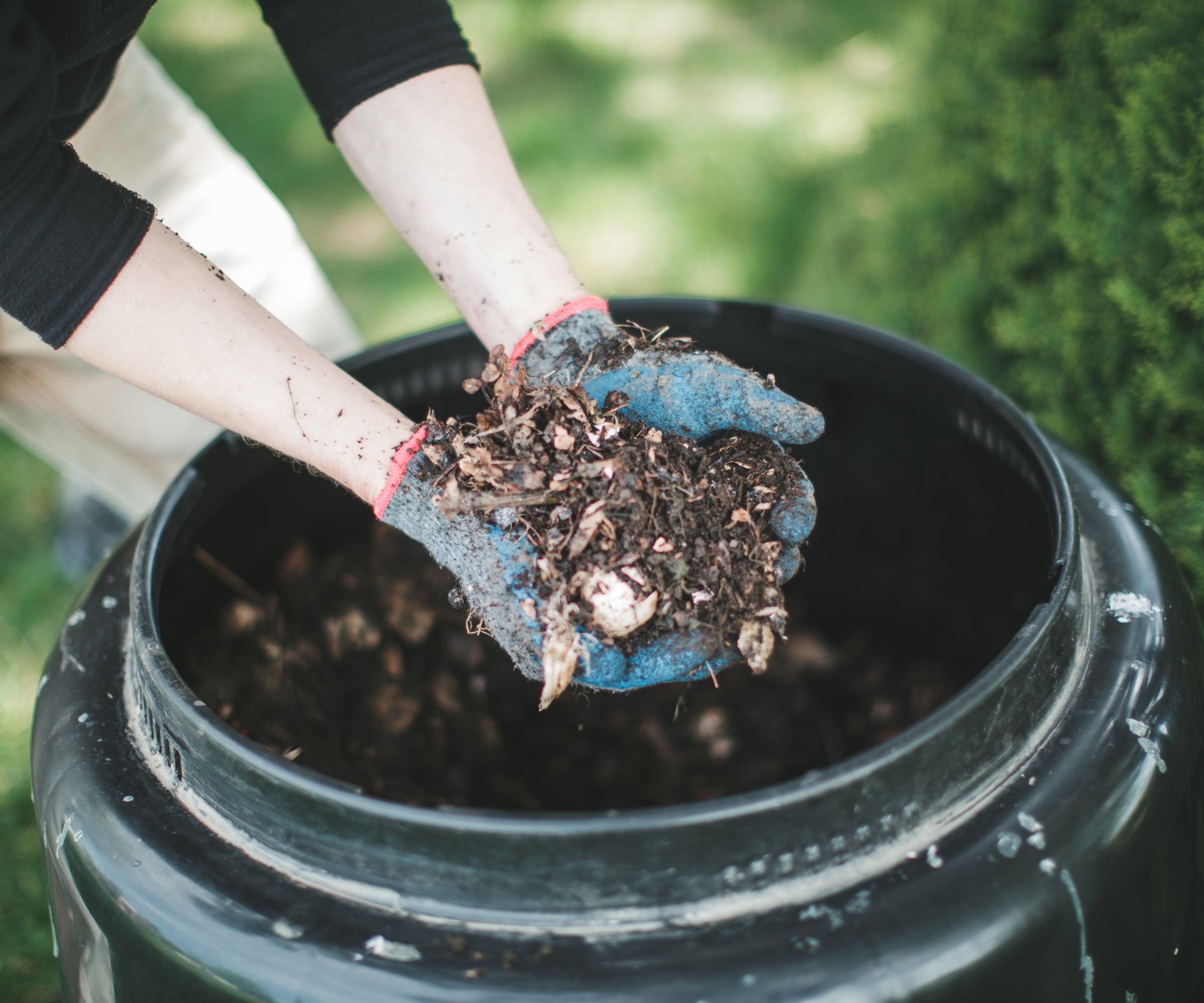
3. Pests
Yellow leaves can be a sign of squash vine borer, whose larvae feast on the stems and leaves of squash and cause leaves to discolor and plants to wilt. The vine borer can also be a problem if you are growing zucchini or pumpkins, but squashes such as tromboncino and butternut squash, which have denser stems, are less susceptible to squash vine borer.
To get rid of the squash vine border you can manually remove the grubs by slitting open the stem or removing whole sections of affected vines. Other options include organic pesticides such as Bacillus thuringiensis or beneficial nematodes. Bonide BT Thuricide Spray can be bought from Amazon.
Other pests that can cause yellow leaves are those that suck sap from plants, including aphids and spider mites. These insects can arrive in large numbers and their feasting causes foliage to discolor and eventually drop off the plant. Aphids are also problematic as they can spread cucumber mosaic virus. There are simple ways to get rid of aphids and get rid of spider mites, including removing them with a blast of water from a garden hose, making homemade bug sprays, or using insecticidal soap.
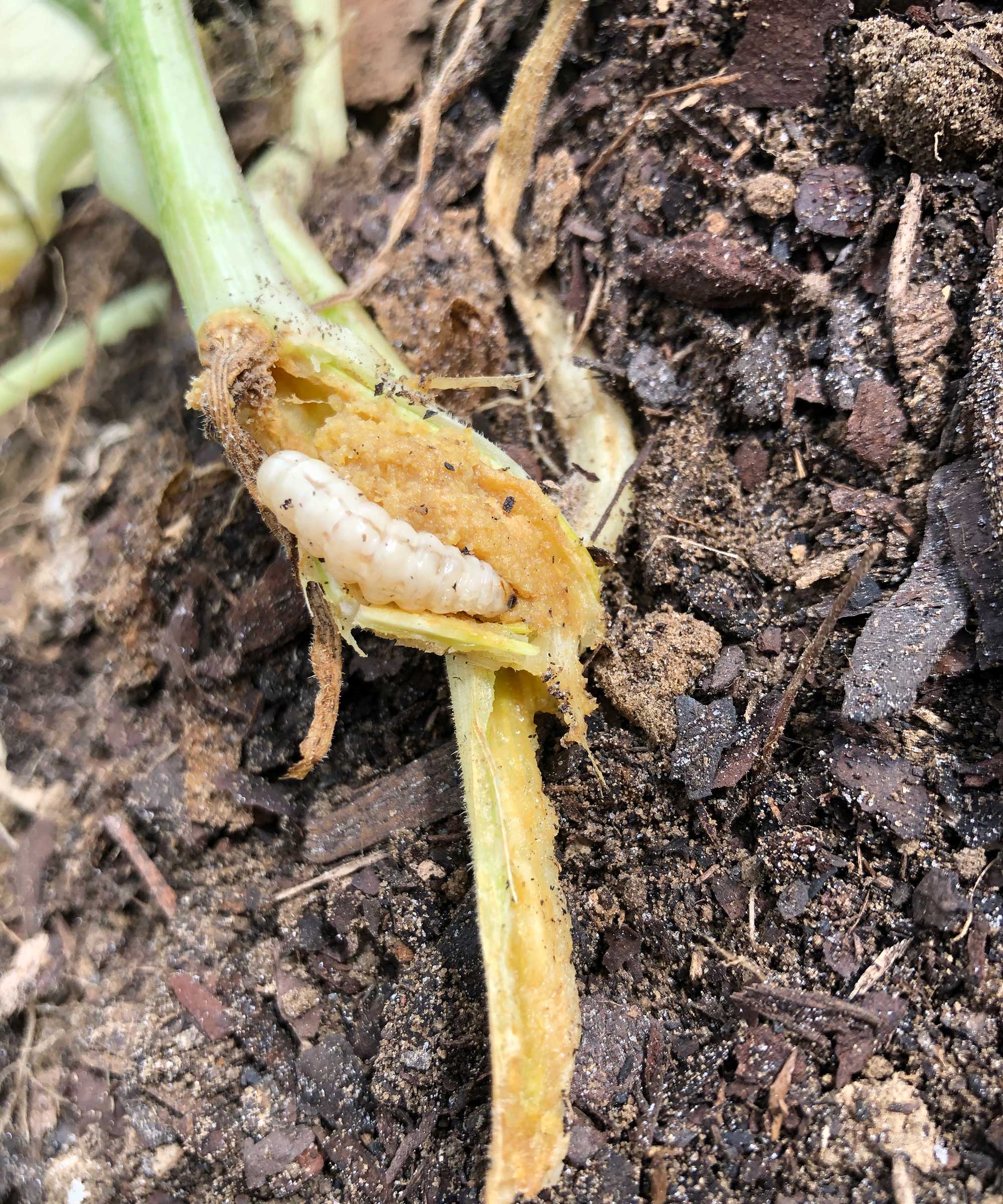
4. Disease
Various diseases can cause yellow leaves, including the likes of fusarium and bacterial wilt and cucumber mosaic virus. Wilt is a terminal problem for plants and any infected ones need to be lifted and destroyed, while mosaic virus seriously reduces the potential harvest.
Not all diseases that cause yellow leaves need to be as serious, including fungal problems such as downy mildew and powdery mildew. These are also common zucchini diseases that eventually cause leaves to turn yellow, among other symptoms.
Lucy Chamberlain advises how you can help to avoid mildew and what the best course of action is if you think the fungal disease is the source of your yellow squash leaves.
She says: ‘Dryness at the roots, stress and stagnant air all encourage powdery mildew, so keep these thirsty crops well watered, well fed and don’t overcrowd them. They do enjoy full sun in order to grow quickly and ripen skins for winter storage, but obviously, these spots can dry out quickly.
‘If you see early symptoms, delay the fungal spread by removing infected leaves. In future years, you can add ample organic matter to the soil to hold onto moisture.’
As well as removing leaves to prevent the spread, you can also get sprays to deal with fungal diseases, such as this Liquid Copper Fungicide available at Walmart that can control powdery mildew as well as a host of other fungal problems.

5. Natural aging
It is not necessarily bad news and something worrying when the leaves turn yellow. Sometimes they can just be a sign of the natural aging process. Older leaves near the bottom of the vine can turn yellow when they mature and fall off, while the rest of the newer foliage is green as normal. A few older, yellow leaves are not anything to be alarmed about. However, it is when the amount of discolored foliage increases and newer leaves are affected too that it becomes concerning and efforts need to be made to work out the cause of the problem.
FAQs
How do you fix yellow leaves on squash plants?
It is perfectly possible to fix yellow leaves on squash plants. Identify the source of the problem, be it water, nutrients, pests, or diseases, and act accordingly. You may need to adjust your watering regime or test your soil to see if there are any deficiencies that need to be addressed. Any pests or diseases are best dealt with by acting quickly and decisively to nip the cause of yellow leaves in the bud. There are organic and inorganic solutions out there to deal with most pests and diseases, though natural fixes should always be preferred. Squash plants can recover perfectly well from yellow leaves if the issues are identified and dealt with without delay.
Should I cut yellow leaves off a squash plant?
It is advised to remove the yellow leaves to help keep the plant as healthy as possible. Lindsay Chastain, homesteader and CEO at the Waddle and Cluck advises: ‘Removing severely damaged or yellowed leaves is recommended to prevent the spread of fungi and pests, but be sure to dispose of them properly and do not compost diseased leaves.’ When you do remove yellow leaves, use sharp and clean pruning shears to make clean cuts that will reduce the risk of diseases getting into jagged open wounds.
Squash is one of the easiest vegetables to grow and a fantastic addition to any vegetable garden or kitchen garden of any size. Simple to grow and maintain, as well as being suitable for vegetable garden container ideas, squashes offer so much to the home gardener. With such a wide variety of types of squashes out there to grow, there is a world of options to discover and they are also incredibly versatile in the kitchen.







